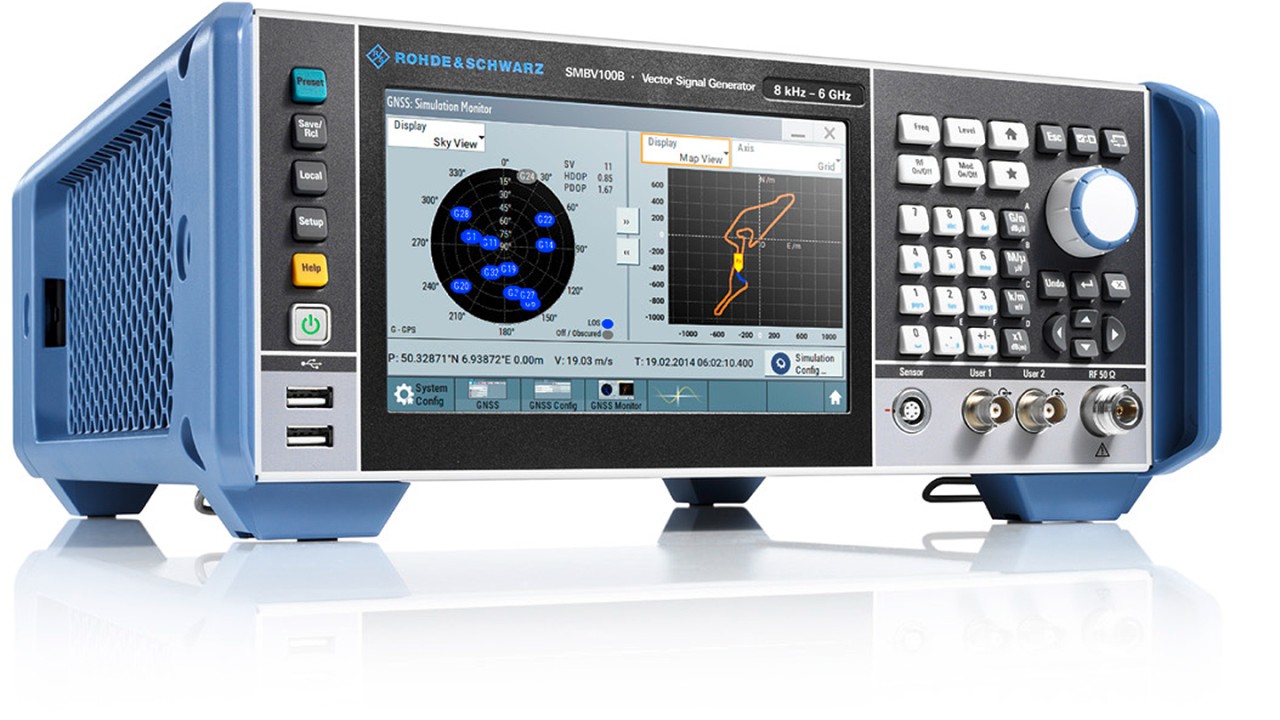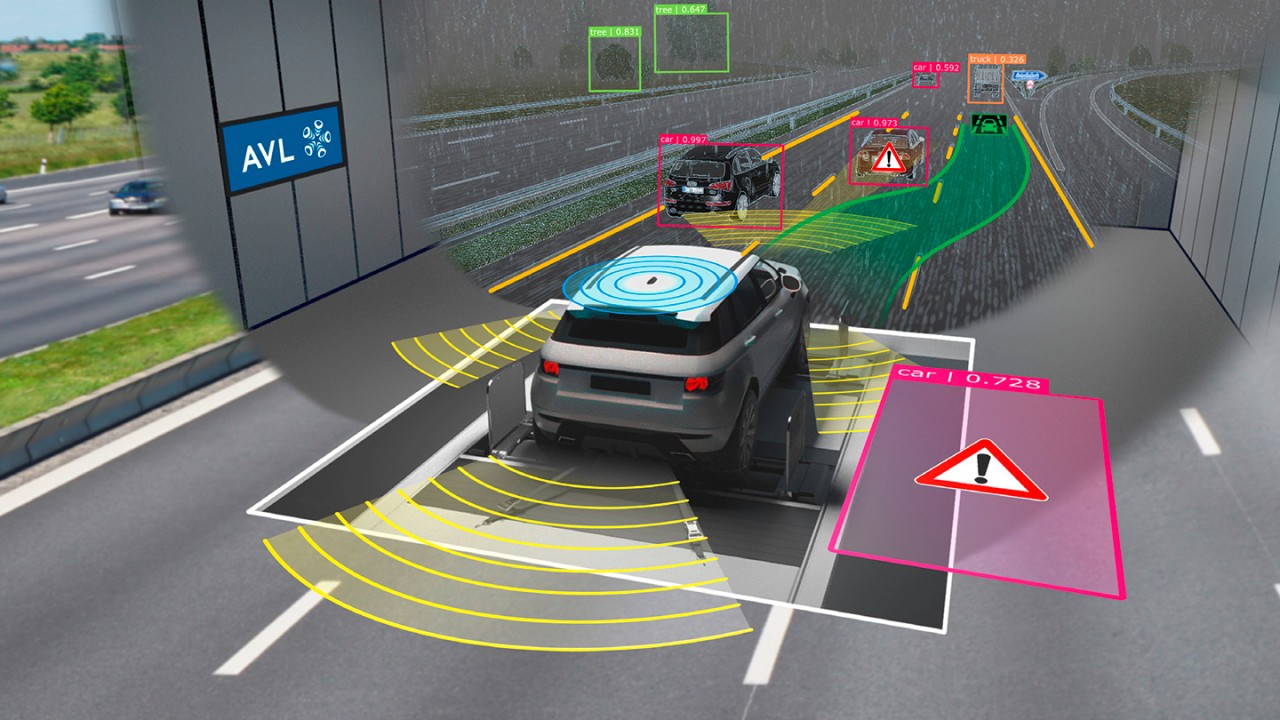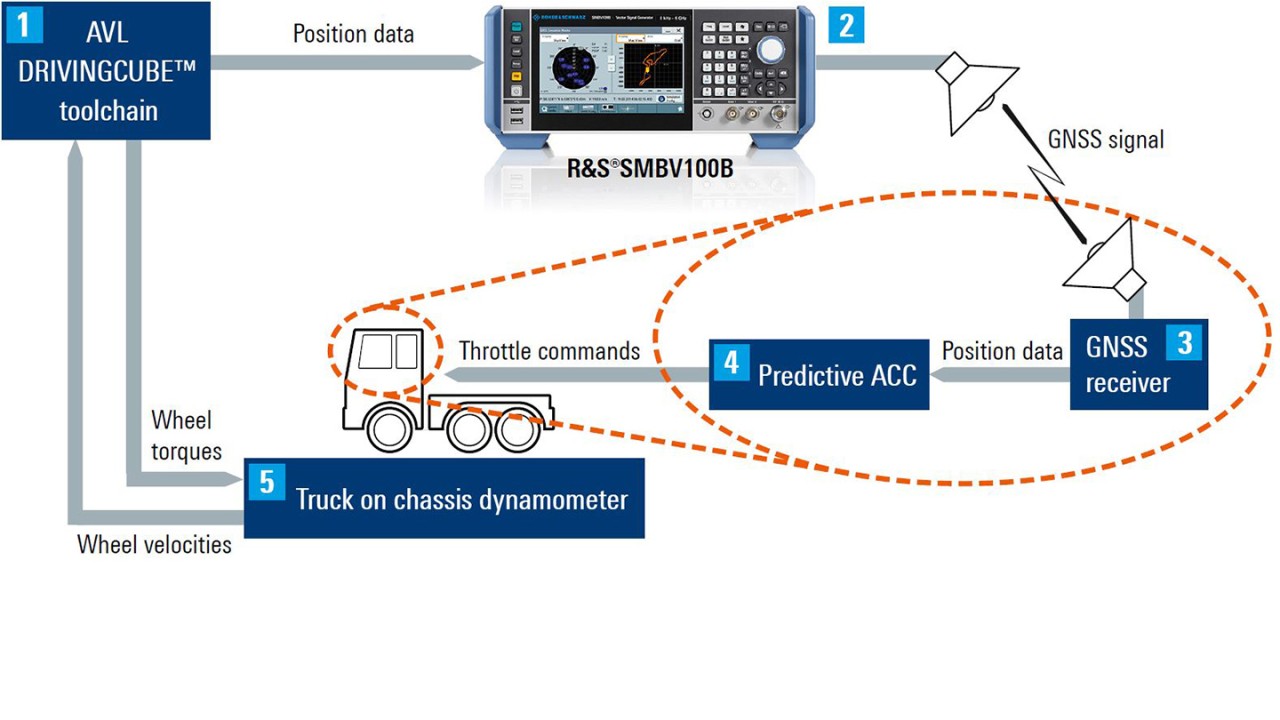Testing of predictive ACC function for trucks in a ViL environment
The AVL DRIVINGCUBE™ can simplify the development of an ADAS system, for example the validation of a fuel efficient, predictive ACC function.
A predictive ACC function considers the road topology ahead based on a geographic height map and the actual truck position calculated by the GNSS receiver. It then adjusts the vehicle speed and engine operating strategy to achieve optimal energy consumption for the entire route.
In order to test the function of the predictive ACC, Rohde & Schwarz and AVL set up the toolchain mentioned above on a chassis dynamometer for trucks in Stockholm.
A geographic map is used in the AVL DRIVINGCUBE™ virtual environment to generate a track on which the virtual truck is driving. The movement of the physical truck, governed by the ACC function (4), is recorded by the chassis dynamometer (5) and transmitted to the system controller (1).
The system controller calculates the expected driving resistance based on truck model driving on the virtual track. The driving resistance is then projected back to the physical truck by setting the resistance provided by the dynamometers accordingly.
Based on the transmitted movement of the physical truck, the position of the virtual truck on the track is updated. This position data is then sent to the R&S®SMBV100B (2), which generates the corresponding GNSS signal. The GNSS signal is fed into the physical truck’s GNSS receiver (3), which calculates a position fix and allows the ACC function to adjust its operating strategy appropriately.
While using this toolchain and driving the physical truck on the test bed in Sweden, it was possible to drive the virtual truck on a German road. The R&S®SMBV100B GNSS simulator was used to generate the GPS radio signals.










